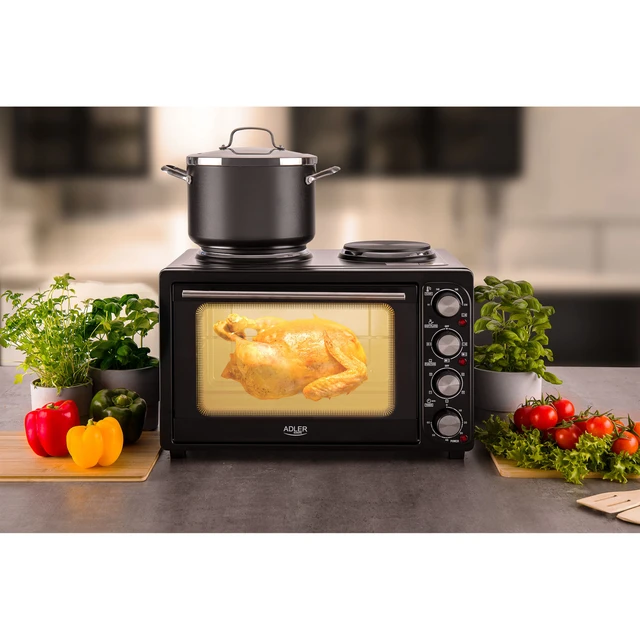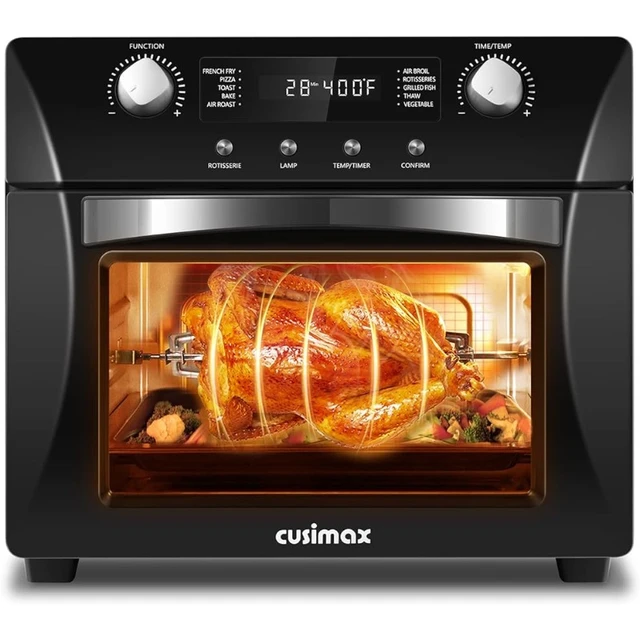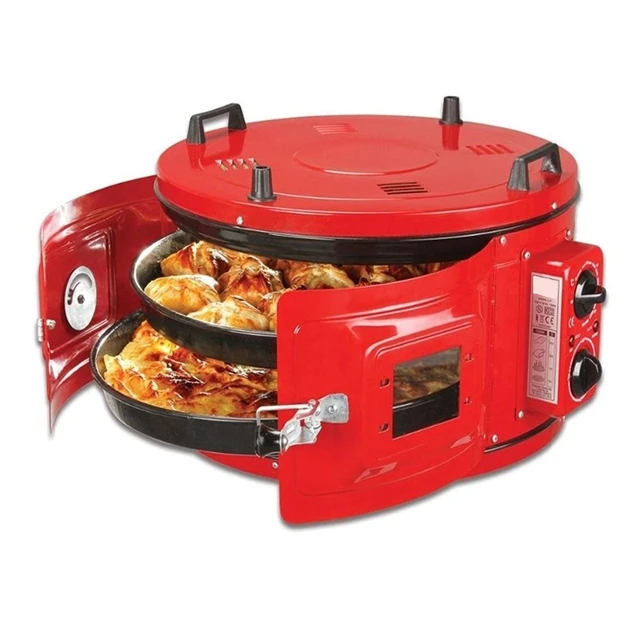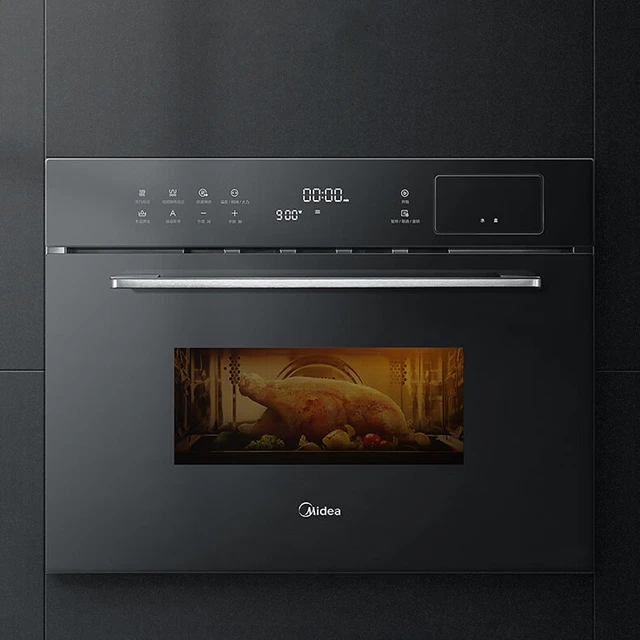Introduction:
Choosing the right oven for baking is essential for achieving excellent baking results. Whether you’re a professional baker or a home cook, having an oven that provides consistent and even heat distribution is crucial for creating perfectly golden crusts, tender cakes, and beautifully risen bread. In this article, we will explore different types of ovens and discuss their features, advantages, and disadvantages when it comes to baking. By understanding the characteristics of various oven types, you can make an informed decision and select the best oven for your baking needs.

What type of oven is best for baking?
Conventional Electric Ovens:
a. Standard Baking Option: Conventional electric ovens are a popular choice for baking. They have heating elements located at the top and bottom of the oven, providing even heat distribution for consistent baking results.
b. Temperature Control: Conventional electric ovens usually allow precise temperature control, enabling you to set the desired temperature for your specific baking recipes.
c. Even Heat Distribution: The heating elements in conventional electric ovens help distribute heat evenly throughout the oven cavity, resulting in uniform baking and browning of baked goods.
d. Potential Downsides: Conventional electric ovens may have hot spots or uneven heat distribution, depending on the specific model. This can result in uneven baking if not properly monitored and adjusted during the baking process.
Convection Ovens:
a. Improved Heat Distribution: Convection ovens are designed to provide enhanced heat distribution through the use of a fan. The fan circulates the heated air, ensuring even baking and reducing cooking times.
b. Faster Baking: The improved heat distribution in convection ovens allows for faster and more efficient baking. The circulating air helps to eliminate cold spots, resulting in more consistent and evenly baked goods.
c. Reduced Oven Temperature: Convection ovens typically require lower baking temperatures than conventional ovens due to the efficient heat circulation. This can lead to energy savings and more precise temperature control.
d. Potential Downsides: It is important to note that convection ovens may require adjustments in baking time and temperature. Some bakers may need to experiment with their recipes and make modifications to achieve the desired results.

Gas Ovens:
a. Moist Baking Environment: Gas ovens tend to create a moist baking environment due to the water vapor produced during the combustion of natural gas. This can be beneficial for certain baked goods, such as bread and pastries, as it helps to prevent excessive drying.
b. Precise Temperature Control: Gas ovens generally provide precise temperature control, allowing for accurate adjustments and maintaining consistent baking temperatures.
c. Potential Downsides: Gas ovens may have slight temperature fluctuations due to the intermittent nature of the gas flame. This can be mitigated by using a baking stone or pizza stone to help regulate and stabilize the oven temperature.
Dual-Fuel Ovens:
a. Combination of Gas and Electric Elements: Dual-fuel ovens combine the benefits of a gas cooktop with an electric oven. The gas cooktop provides precise heat control, while the electric oven offers even heat distribution ideal for baking.
b. Versatility: The combination of gas and electric elements in dual-fuel ovens provides versatility in the kitchen, allowing for a wide range of cooking techniques, including baking, roasting, and stovetop cooking.
c. Potential Downsides: Dual-fuel ovens can be more expensive than single-fuel options. Additionally, the installation process may be more complex, as both gas and electric connections are required.

Steam Ovens:
a. Moist Heat Environment: Steam ovens are designed to introduce steam into the cooking process, creating a moist environment. This is particularly beneficial for baking bread, as the steam helps to develop a crisp crust and a soft interior.
b. Precise Temperature Control: Steam ovens offer precise temperature control, allowing for accurate adjustments and maintaining consistent baking temperatures.
c. Potential Downsides: Steam ovens are specialized appliances that may have limited baking capabilities beyond bread and other baked goods that benefit from steam. They are typically more expensive than conventional ovens and may require additional space in the kitchen.

Brick Ovens:
a. Superior Heat Retention: Brick ovens are favored by many professional bakers for their exceptional heat retention properties. The thick brick walls absorb and store heat, providing consistent and high heat levels ideal for artisan bread and pizza baking.
b. Crispy Crusts and Oven Spring: The intense heat in brick ovens helps create crispy crusts and promotes “oven spring,” which is the rapid rise and expansion of dough during the initial stages of baking.
c. Potential Downsides: Brick ovens require a significant investment and dedicated space, making them more suitable for professional settings or outdoor kitchens. They also require additional skill and experience to operate effectively.
Considerations for Choosing the Best Oven for Baking:
a. Baking Needs and Preferences: Consider your specific baking needs and preferences. Do you primarily bake bread, cakes, pastries, or a combination of various baked goods? This will help determine the ideal oven type for your baking requirements.
b. Available Space: Consider the available space in your kitchen. Some oven types, such as brick ovens, require dedicated space and installation considerations, while others can be integrated into standard kitchen cabinetry.
c. Budget: Determine your budget for purchasing an oven. Different oven types vary in price range, and it is essential to choose an oven that fits within your budget while still meeting your baking requirements.
d. Energy Efficiency: Consider the energy efficiency of the oven. Look for energy-efficient models that can help reduce energy consumption and lower utility bills over time.,

Conclusion:
The best oven for baking depends on individual preferences, baking needs, and budget considerations. Conventional electric ovens are a reliable choice, providing even heat distribution and precise temperature control. Convection ovens offer improved heat circulation and faster baking times. Gas ovens create a moist baking environment and allow for precise temperature control. Dual-fuel ovens combine the benefits of gas cooktops with electric ovens, providing versatility in the kitchen. Steam ovens introduce moisture for crisp crusts and soft interiors. Brick ovens offer superior heat retention, ideal for artisan bread baking. By carefully considering your specific baking requirements, available space, and budget, you can select the best oven type that will enhance your baking experience and allow you to achieve exceptional baking results.

